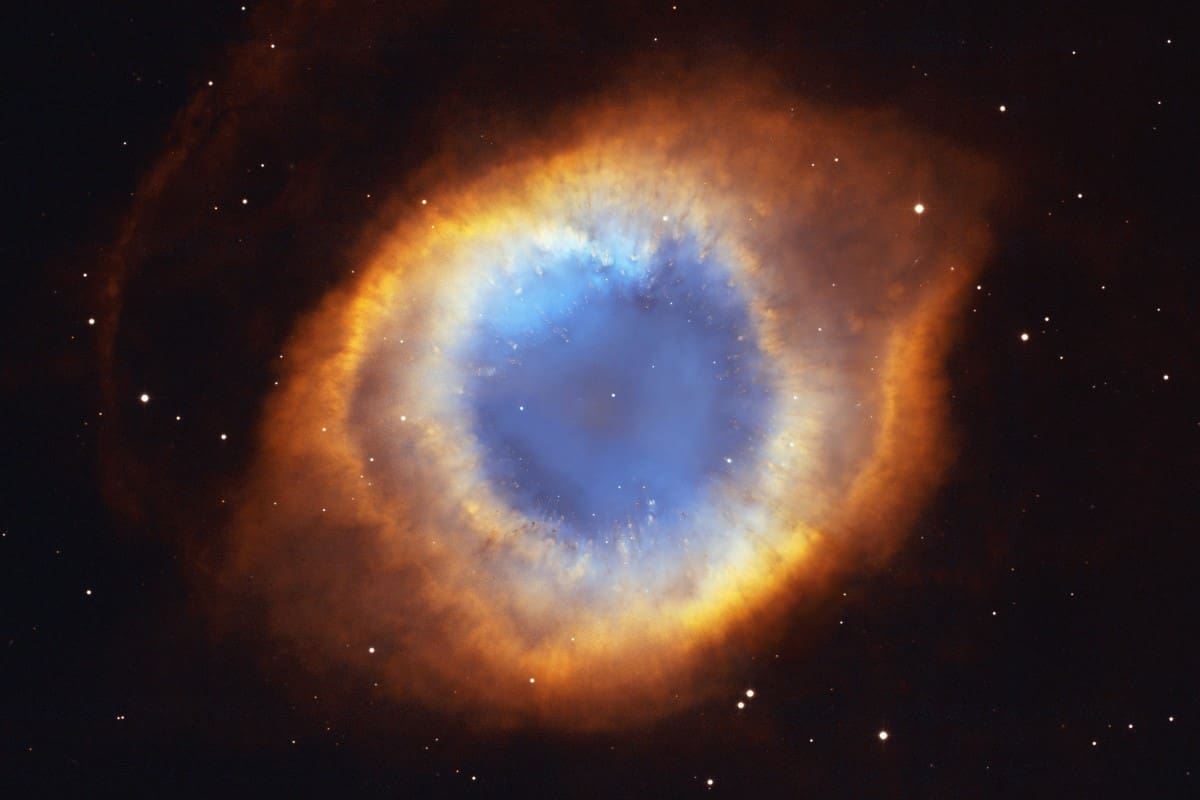Planetary nebulae are among the most stunning and intriguing phenomena in the universe. These cosmic objects dazzle observers with their colorful shapes and mysterious origins. Despite their name, they have nothing to do with planets – the term arose in the 18th century when early astronomers mistook them for distant planets due to their round, glowing appearance. Today, we understand that planetary nebulae represent a brief but beautiful phase in the death of certain types of stars. Below are fascinating facts about planetary nebulae that you might not know.
- Planetary nebulae are formed when stars similar in size to the Sun reach the end of their life cycle. The star expels its outer layers into space, creating a shell of gas around the remaining core. The hot core then emits intense radiation, causing the gas to glow.
- The term “planetary nebula” was coined in the 18th century because these nebulae looked like planets through early telescopes. However, they have no relation to planets and are actually stellar remnants. The misleading name has remained in use for historical reasons.
- A typical planetary nebula can span up to one light-year in diameter. This means that light would take an entire year to travel from one side to the other. Although the mass of the nebula is only a small fraction of the original star’s mass, its volume is enormous.
- The lifespan of a planetary nebula is relatively short in astronomical terms, usually lasting only a few thousand to tens of thousands of years. After that, the gas disperses into the interstellar medium. The central star eventually cools and fades as a white dwarf.
- Some planetary nebulae display strikingly symmetrical shapes that resemble rings, butterflies, hourglasses, or spirals. These shapes are influenced by magnetic fields, stellar winds, and binary star systems. As a result, each nebula has a unique and complex structure.
- Planetary nebulae play a crucial role in enriching the universe with heavy elements. As they disperse, they release elements like carbon, oxygen, and nitrogen, which are essential for the formation of new stars and planets. This process contributes to the ongoing cycle of cosmic evolution.
- The colors of a nebula are determined by the types of gases present and the levels of ionization. Red often indicates hydrogen, green suggests oxygen, and blue may signal the presence of helium. Astronomers use filters to isolate specific wavelengths and study the chemical makeup.
- One of the most well-known planetary nebulae is the Ring Nebula, located in the constellation Lyra. It appears as a glowing ring with a dimmer center and lies about 2,300 light-years from Earth. It has been studied by astronomers for centuries and remains a classic example.
- The Butterfly Nebula (NGC 6302) is famous for its extremely high central temperature, which exceeds 200,000 degrees Celsius. Its powerful stellar winds create wing-like lobes of gas, forming a striking butterfly shape. It is located in the constellation Scorpius.
- At the center of every planetary nebula is a white dwarf, which is a small, dense stellar remnant. Although roughly the size of Earth, it can have a mass comparable to the Sun. Our own Sun is expected to become a white dwarf in about five billion years.
- Many planetary nebulae exhibit features that suggest they formed in binary star systems. The gravitational interactions between two stars can lead to asymmetrical structures and multiple gas shells. These features provide valuable clues to stellar dynamics.
- Planetary nebulae expand rapidly, with speeds reaching tens of kilometers per second. Over a thousand years, a nebula can grow to trillions of kilometers in size. Long-term observations help astronomers measure and model this expansion.
- These nebulae serve as excellent laboratories for astrophysical research. Scientists use them to study ionization processes, gas dynamics, and the behavior of radiation. They also offer insights into the final stages of stellar evolution.
- There are over 3,000 known planetary nebulae in the Milky Way galaxy. However, many remain undiscovered due to dust obscuration or faintness. Advanced telescopes, both ground-based and space-based, are essential for their detection.
- Some nebulae have a layered structure formed during different phases of stellar mass loss. Outer layers are cooler and move more slowly than the inner ones. This helps astronomers reconstruct the history of the dying star.
- Certain planetary nebulae also emit X-rays from their hottest regions near the central star. Satellites like Chandra allow scientists to observe this high-energy radiation in detail. These observations reveal information about temperatures, densities, and shock waves.
- Although the name may suggest otherwise, planetary nebulae have no connection to planets. Their true value lies in what they reveal about stellar life cycles and the chemical evolution of galaxies. They are among the most beautiful and educational objects in the night sky.
These amazing facts about planetary nebulae highlight the complexity and elegance of the universe. From their brief but vivid lifespans to their role in seeding the cosmos with elements, planetary nebulae demonstrate the powerful transformation stars undergo as they die. Observing them offers a glimpse into our own star’s distant future. Through them, we better understand the grand processes that shape galaxies and life itself.





